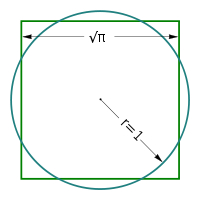He was 16 years old. In the dark of the night when silence reigns and the limits of the world disappear into the unbound vistas of the subconscious, he heard the faint sound of muted footsteps. He lay quietly contemplating the lone star visible through the small window. He heard the creek of the door and from then on a coarse hood over his head smothered his view. His one and only protest had been silenced with the glint of the dagger that pressed against his neck.
He was born to Calphurnius and Conchessa. Calphurnius was high-ranking official Roman and a deacon -son of a priest, while Conchessa his mother was a relative to the great patron of a Gaul, St. Martin of Tours. In their house religion was the foundation of life. Now at a tender age, he was a captive.
After days of fear, anger, resentment and subsequent acceptance, he found himself in the hands of Irish raiders who then traded him for their needs. His mutinous thoughts were long forgotten after the short but tumultuous journey by boat onto a land far away from his birthplace in Roman Britain. For six long years he tended to the flock of his captive chieftain named Milchu in Dalrida and during those days and nights his faith in God increased, as did his knowledge of the Celtic tongue. He realized his master Milchu was a high druid and so he immersed himself to understanding that culture. He became accustomed to the Celtic pagan pantheism. One night wistful under the canopy of stars, he heard the voice that bade him to return to his home. With the strength of that conviction he fled from the cruelty and traveled some two hundred miles by foot to the seashore where he boarded a ship back to Britain. He was 22 years old, wiser of the ways of his captors and deeply religious when he came ashore.
The Bishop of Auxerre commended the young Roman-Briton lad to Celestine, Pope of Rome. Knowing of his understanding of the culture in Ireland, the Pope decreed him to return to Ireland on a mission to Ireland’s apostle and gave him the name “Patercius.”
"Vercingetorix Throws Down His Arms at the Feet of Julius Caesar", 1899, by Lionel Noel Royer
The Gallic wars of 58-51BC had laid Gaul under the mercy of the Roman Empire. Julius Caesar had annexed all the conquered lands to the Roman Empire. Caesar’s written account “Commentarii de Bello Gallico” gives a limited but cautious account of the culture of the druids.
Julius Caesar
"These men predict the future by observing the flight and calls of birds and by the sacrifice of holy animals: all orders of society are in their power... and in very important matters they prepare a human victim, plunging a dagger into his chest; by observing the way his limbs convulse as he falls and the gushing of his blood, they are able to read the future.”
This culture was steeped in paganism that allowed human sacrifice to please the Celtic deities. The sacrificial humans were burnt in a large wooden effigy that later assumed the name of “wicker man.”
When “Patercius” returned to the shores of the druid-Ireland in 433, he immediately faced their wrath, yet, undeterred he persisted in his preaching to the assembled chieftains who showed him some deference. It is said that during that discourse, he plucked a shamrock and explained the doctrine of the Holy Trinity to the pagans who were Christianized.
Shamrock
Patercius died on (3.17) March 17 in 493.
Saint Patrick, as he is now known banished paganism and human sacrifice through the conviction of his religion from Ireland. His intimacy with the Celtic traditions and those of his ancestry set the stage of bringing enlightenment to the country and people of Ireland.
St. Patrick's burial
Saint Patrick, as he is now known banished paganism and human sacrifice through the conviction of his religion from Ireland. His intimacy with the Celtic traditions and those of his ancestry set the stage of bringing enlightenment to the country and people of Ireland.
Pi
Just as significant as 3.17, 3.14 is a curious string of numbers also. They seem to have some implication in the field of mathematics. Archimedes was the first scientist to try to come to an approximate value Pi.
The measurement of the area of the circle is determined by dividing its circumference by the diameter.
What is curious is that Pi is an irrational number, in that it does not have a finite integer and a transcendental number, which means, it is non-repetitive. Great minds like, Archimedes, Leonard Euler including Albert Einstein and others has studied Pi at great length. So much so, with the advent of computers, what was once considered difficult to calculate past hundred digits, now through dense computational power, the current value of Pi is calculated at 5 trillion digits past the decimal in a non-repeating string! Curiously Pi is used throughout all disciplines of sciences. It appears in formulas of area and volume and is extensively used in architecture. In fact The Great Pyramid at Giza, constructed c.2589–2566 BC, was built with a perimeter of 1760 cubits and a height of 280 cubits; the ratio 1760/280 ≈ 2π
The measurement of the area of the circle is determined by dividing its circumference by the diameter.
What is curious is that Pi is an irrational number, in that it does not have a finite integer and a transcendental number, which means, it is non-repetitive. Great minds like, Archimedes, Leonard Euler including Albert Einstein and others has studied Pi at great length. So much so, with the advent of computers, what was once considered difficult to calculate past hundred digits, now through dense computational power, the current value of Pi is calculated at 5 trillion digits past the decimal in a non-repeating string! Curiously Pi is used throughout all disciplines of sciences. It appears in formulas of area and volume and is extensively used in architecture. In fact The Great Pyramid at Giza, constructed c.2589–2566 BC, was built with a perimeter of 1760 cubits and a height of 280 cubits; the ratio 1760/280 ≈ 2π
More interesting is the slope of the Great Pyramid is calculated to a value of 4/Pi. If not for this precision, the Pyramids would not with stand the vicissitudes of time.
The Great Pyramid at Giza
Leonard Euler described a formula correlating the behavior of the exponential function of a complex variable.
Pi also appears in equations dealing with the principles of the Universe, in probability and statistics. Interestingly from the known values of the Pi in calculation any deviation translates to an error in measurement and performance over time. The precision can be quantified, as a difference of a single atom in a 10-centimeter needle would display itself in the 9th digit of the result. Essentially, deviation from the known value becomes the Lorenz's “Strange attractor” for the beginnings of a chaotic model.
Nature has a tendency to follow the Pi rule:
“Under ideal conditions (uniform gentle slope on an homogeneously erodible substrate), the ratio between the actual length of a river and its straight-line from source to mouth length tends to approach π.
Albert Einstein was the first to suggest that rivers have a tendency towards an ever more loopy path because the slightest curve will lead to faster currents on the outer side, which in turn will result in more erosion and a sharper bend. The sharper the bend, the faster the currents on the outer edge, the more the erosion, the more the river will twist and so on. However, increasing loopiness will result in rivers doubling back on themselves and effectively short-circuiting, creating an ox-bow Lake. The balance between these two opposing factors leads to an average ratio of π between the actual length and the direct distance between source and mouth.”
So what does Pi have to do with St. Patrick is the obvious question. Well it turns out that the value of Pi is 3.14152965 or 3.14 or March 14 which is three days before St. Patrick’s Day (celebrated for St. Patrick’s death) and 3.17 is exactly 3.14 days after the value of Pi, or St. Patrick’s Day-Pi=Pi (saw that on a tee-shirt) translation: 3.17 St. Patty’s day -3.14 (Pi =3.141) =3.14 (days left between the two). So there is a mingling of science and the Great Saint of Ireland. Both true in their transcendental nature, both perfect in their precision, both related in time and both immersed in the rigors of knowledge and both remembered eons after their time.
So let the rivers turn green in honor of a great Saint and as they do remember nature that ultimately controls the flow of those rivers uses a Constant that is precise and transcendental as nature herself.
St. Patrick's Cathedral in NYC
The caravan of digits that is pi
does not stop at the edge of the page,
but runs off the table and into the air,
over the wall, a leaf, a bird's nest,
the clouds, straight into the sky,
through all the bloatedness and bottomlessness.
Oh how short, all but mouse-like is the comet's tail
----- Wistawa Szymberska
























No comments:
Post a Comment